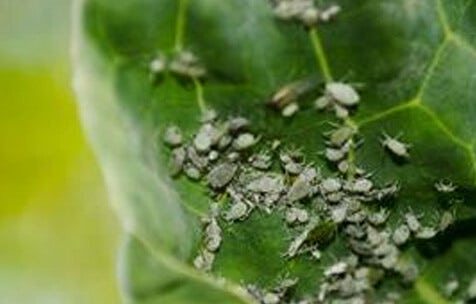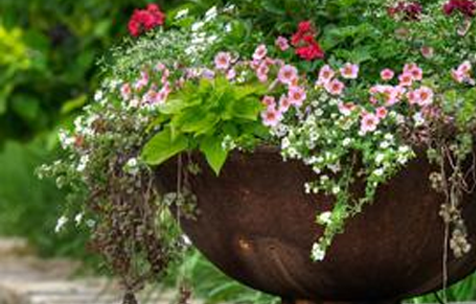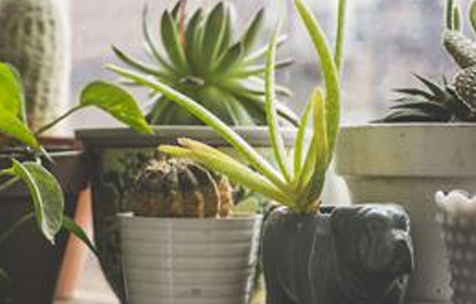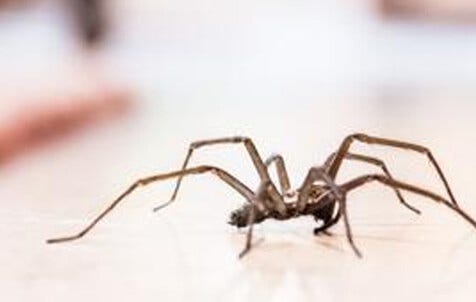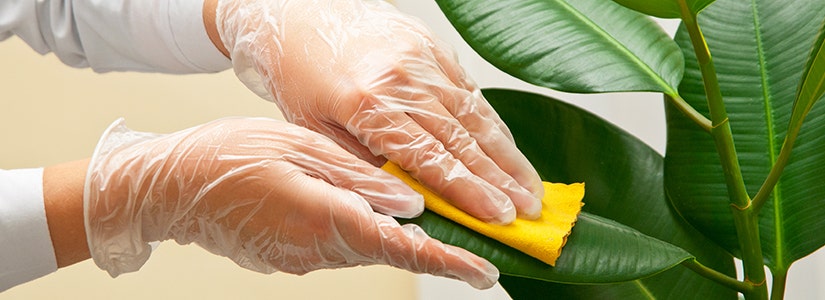

- Home
- Solution Center
- Learn
- Learn House Plants
- How To Clean Your Houseplants
How To Clean Your Houseplants
Healthy houseplants need more than water and sunlight to thrive. They also need a little TLC – tender loving cleaning. By removing dust and dirt from leaves, you're paving the way for healthier houseplants.
Why you should clean houseplants
Plants use sunshine to conduct photosynthesis, the metabolic process that keeps them alive. Dusty, grimy layers on leaves limit the amount of light leaves receive. A dirty leaf surface also provides easy footing for diseases and can help hide insects.
Cleaning leaves does more than make plants look good. It fuels their health and can limit pests and diseases.
How to clean houseplants
Smooth leaves:
- Dust plants lightly with a disposable electrostatic or reusable microfiber cloth. Next, wipe both sides of leaves with a soft cloth dipped in lukewarm water.
- To remove heavy dirt, mix roughly ¼ teaspoon dish detergent in 1 quart of lukewarm water. Spray the plant, then rinse off. This is best done outdoors in the shade or on a cloudy day. To tackle cleaning larger plants indoors, place plants in the shower. Elevate them on a stool so you can turn them easily to clean all sides.
- Hold small plants upside down and swish in a bucket of lukewarm water (add soap if needed). Contain soil by placing aluminum foil or plastic wrap over soil.
- To give leaves a high gloss, use a professional leaf shine product.
Hairy leaves:
- Avoid using water on hairy leaves; it can actually cause spots.
- Use a soft brush or canned compressed air to remove dirt.
- Also use compressed air on cacti to blow away dirt.
When to clean houseplants
How often you need to clean plants depends on how dusty your home is. The easiest way to tell when your houseplants need cleaning is with a glance or finger swipe. If you can see the dust or feel it beneath your fingers, it's probably time to clean.
In colder regions, where rinsing larger plants outdoors isn't an option year-round, consider giving plants an annual outdoor shower during warm weather. This is especially important for plants that have spent the summer outdoors.
Inspect houseplants
While cleaning, inspect plants for problems. Follow this routine to give houseplants a thorough inspection:
- Look over leaves. Insects like to hide beneath leaves. Flip leaves over and look closely for bugs. Many diseases appear as spots on leaves, so watch for discolored areas.
- Check where leaves attach to stems. Insects often nestle into this cozy spot. This is also a good place to look for webbing, a sign of Spider Mites.
- Examine stems. Are they strong and the correct color? If your plant is woody, make sure bark is intact on stems.
- Inspect soil. Many insects spend part of their time in soil. White on the soil surface could be mold (fuzzy) or soluble salt buildup (crystalline). Gently scrape away either and adjust watering. Water less frequently if mold is present, and leach if salts occur.
Learn the signs. Increase your knowledge of common houseplant insects and diseases.










